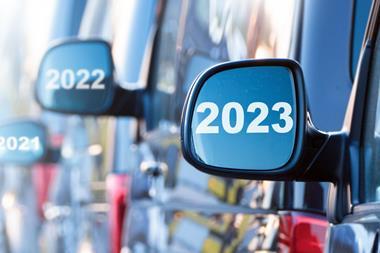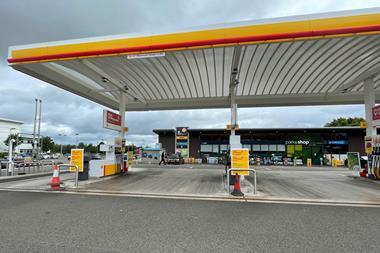Ever wanted to find out what makes your customers tick? Well, TNS is hoping to help the forecourt industry do just that with its new continuous panel service.
By recording the till receipts gathered from 1,650 UK motorists, the TNS PetrolPanel service provides detailed insight into consumer buying habits of both fuel and shop products across the forecourt market. By combining this data with the panel member’s personal information, TNS can build shopper profiles to help retailers make informed business decisions. Panel data is constantly validated and anomalies investigated.
“Continuous panels track peoples’ behaviour over time and the advantage is it’s not based on recall like with exit polls – it’s the first service of this type for the petrol industry in the UK,” says PetrolPanel’s account director Richard Willcox. “It’s more accurate than exit polls and the amount of data we’re able to collect is much larger. We can get right down to site formats – we know what grade of fuel customers bought, what price they paid, and can gather category-level data.”
The PetrolPanel scheme involves 1,650 panellists who collect till receipts and mail them back to TNS on a four-weekly basis. One of the key advantages of receiving data regularly from the same set of motorists is that TNS can track loyalty and switching. It can track all variables over time and make brand comparisons. And from an oil company point of view, that means comparing your performance with the competition.
“We can look at whether having a loyalty card increases usage,” says Willcox. “By having detailed information about panel members, we which loyalty cards they have; whether they actually use that card and whether that makes them more loyal.”
And through continuous tracking, subscribers to the service can also see when a panel member gets a new loyalty card and whether that makes them switch brand.
Subscription to PetrolPanel provides access to the full database, periodic reports and ad hoc presentations. “We’re in the early stages but we currently have a mix of majors and supermarkets signed up,” says Willcox. PetrolPanel would also be suitable for larger independents. And while TNS has ownership of the data, it’s up to the oil company whether they share that data with their dealers.”
The first 12 weeks-worth of data has revealed some interesting insights. For example, men account for 54 per cent of unleaded fuel customers, but 50 per cent of the total spend. C1 is the key demographic social class, both in terms of the number of customers (37 per cent), and the total spend on unleaded (42 per cent). ABs, meanwhile, spend more per individual than any other social group, with just 16 per cent of customers accounting for 20 per cent of spend.
BP has 17.8 per cent of the C1 market spend on unleaded fuel, but trails Esso in its share of male spend, with 15.4 per cent versus Esso’s 16.3 per cent. And in terms of customers who are both C1 and male, Esso has the greatest market share with 18.3 per cent of spend.
When it comes to shop sales, 58 per cent of motorists visiting a forecourt will purchase something from the shop, and of these, 51 per cent will buy confectionery. This means that almost one in three will buy confectionery when purchasing fuel.
While only one in 10 customers purchases tobacco from the shop, the category accounts for 22 per cent of non-fuel expenditure (excluding the car wash), the largest category in terms of spend by far, followed by phone cards.
The data can also show up areas of weakness. “By identifying missed opportunities retailers can look at potential strategies to increase spend,” says Willcox. “For example, we know we’re not going to get DEs on the forecourt more frequently, but we can look to increase their spend.
“And C2s are generally an underdeveloped group – their frequency is lower than any other group but that is not because they’re filling up more per visit. PetrolPanel can help us understand why they contribute such a low proportion of spend.”
When it comes to shop conversions by retailers, Esso is the most successful at converting fuel customers into purchasing something from the shop. In fact, 44 per cent of its fuel customers buy at least one non-fuel item.
And subscribers can also compare their ability to tempt fuel customers to buy other products with competitors. For example, with the exception of Tesco, the supermarkets are far less successful in converting a fuel customer into a shop customer.
“Supermarkets may be lower because motorists have just done their main shop, and Asda’s is likely to be small because it has drive-through forecourts,” explains Willcox.
In the New Year, PetrolPanel will also be sending out lifestyle questionnaires to all the panellists. This will give further insight into their purchasing decisions.





























No comments yet